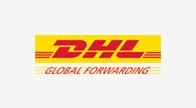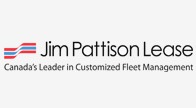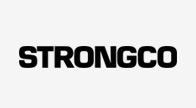Many custom signs buying decisions continue to be made on the basis of whether a film is calendared or cast independent of the properties of the film under consideration. There is a perception that a cast film provides assurance of the best film being used. The word “cast” refers exclusively to the manufacturing process. It does not indicate the ingredient quality or even the manufacturer’s expertise. When they are sitting of the floor waiting to be used a calendared vinyl looks like a cast vinyl. The difference is in the manufacturing process that results in different physical properties.
Cast films
Making cast vinyl films for commercial signs are similar to baking cakes. It starts with an ingredient list and a recipe. This is known as the formulation. These materials are then added to a mixing churn in a predetermined order. The ingredients are then mixed at particular speeds and for fixed amount of time. These steps ensure a consistent and complete mixture. This mix is termed organosol which is cast into a casting sheet. It is subsequently processed via a number of ovens that permits the solvents to evaporate. Post evaporation, a solid “film” remains. This film is wound for adhesive coating. The film’s texture is determined by the casting sheet.
Since the vinyl is cast on a casting sheet when the latter is in its relaxed state, the material provides excellent dimensional stability. The process permits the film to be ultra thin, assisting with the product conformability. Material manufacturers recommend that cast films be used on substrates like vehicles, boats or ship. They could be applied anyplace where the customers prefer a paint like finish which will last much longer- up to 12 years. This will depend on how this film is processed.
Cast films advantages
- Shrinkage is the lowest among all the vinyl films as the casting sheet- and not the film- is pulled through the machine. As the film doesn’t suffer any stress during the manufacturing process, there are no internal forces to cause the film to shrink.
- Cast films are more durable compared to other vinyl films. This is due to the raw materials used and the manufacturing method.
- It is possible to manufacture ultra thin films that generate a conformable product which permits its application over riveted, complex curved and corrugated substrates. Once applied, the low caliper makes graphic much less vulnerable to the abrasive forces.
- Colour and other properties are maintained much better by cast films compared to vinyl films. The result is a much better performance of UV absorbers and pigments.
- The cast films manufacturing process makes it easier to run smaller productions in special colours. It is comparatively easier to change the colour during production. Small batch colour production is thus possible.
Calendared films
- Similar to cast, the calendared film also derives its name from the manufacturing process. The process of production is similar to preparing a pie dough. The ingredients are first mixed and then kneaded in the extruder. Large heated steel rollers form vinyl into a thin sheet- a process termed “calendering”.
Advantages of calendared films
- Present day calendared films are glossier and thinner. They enjoy less shrinkage and have better conformability, then previous calendared films.
- Less cost due to greater production speeds.
- Easier handling possible due to thicker and stiffer film.
- Superb performance on moderate, simple and flat curves.
- Present day films come in a larger variety of colours. Gloss levels also come in many ranges.
- High grade or polymeric films can have much less shrinkage- about two percent to three percent.
- Formulation of the film increases abrasion resistance.
However, do note that the quality of the finished product depends on the ingredients mixed into it. This starts with selecting the correct vinyl for doing the job. In case you want to do a complete vehicle wrap where the graphic must conform, a cast film is ideal. However, in the case of wall murals and floor graphics, calendared films may make a more sensible choice.
To be able to do an apples to apples comparison you need to know if both quotes received were for the same type of material. Ask your sign company why they are recommending the specific materials used in their quote. If they are the standard materials they use – they may not be the best for your application. If they identified the physical challenges for your application and selected the material to suit, you can rest assured that your sign supplier is adapting to you instead of trying to get you to adapt to them.

















